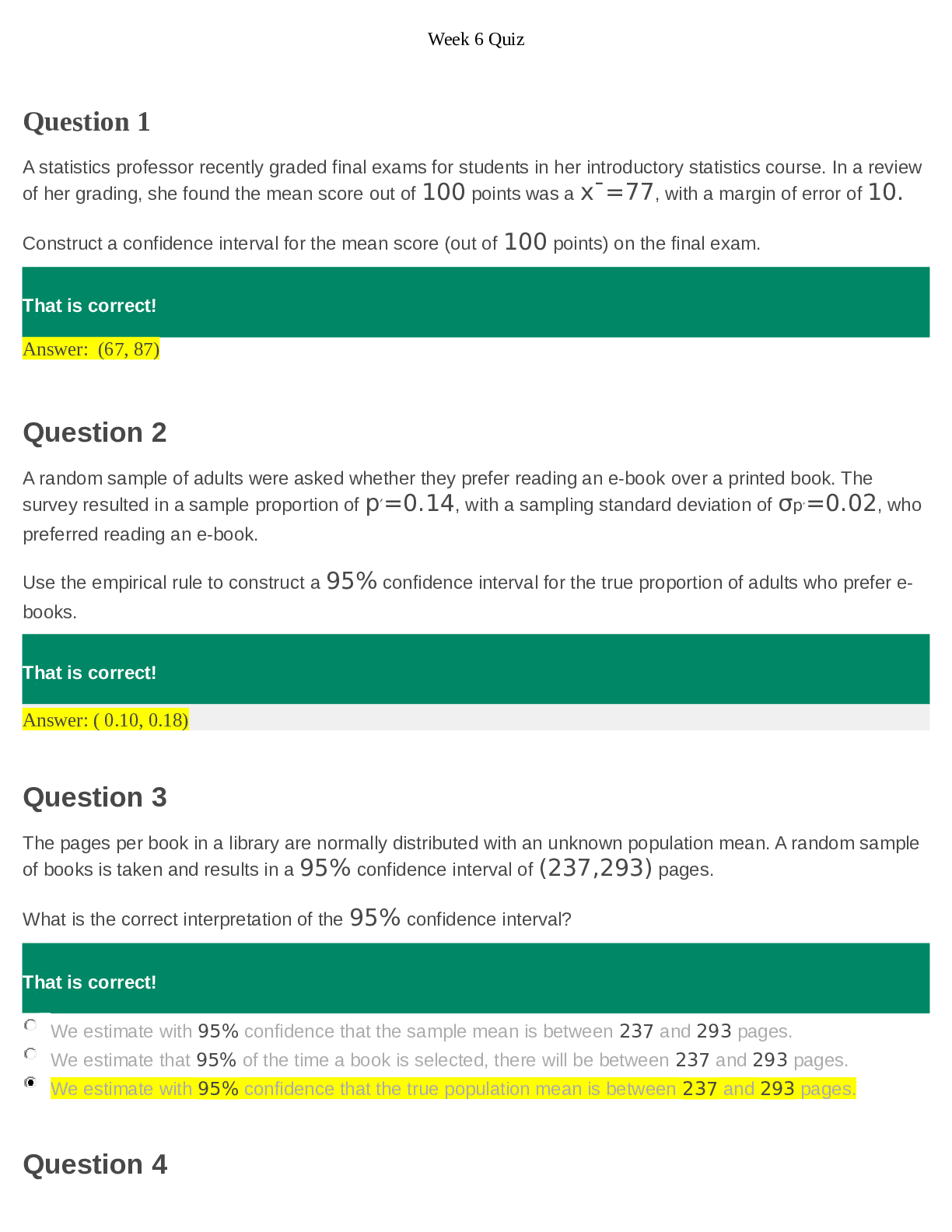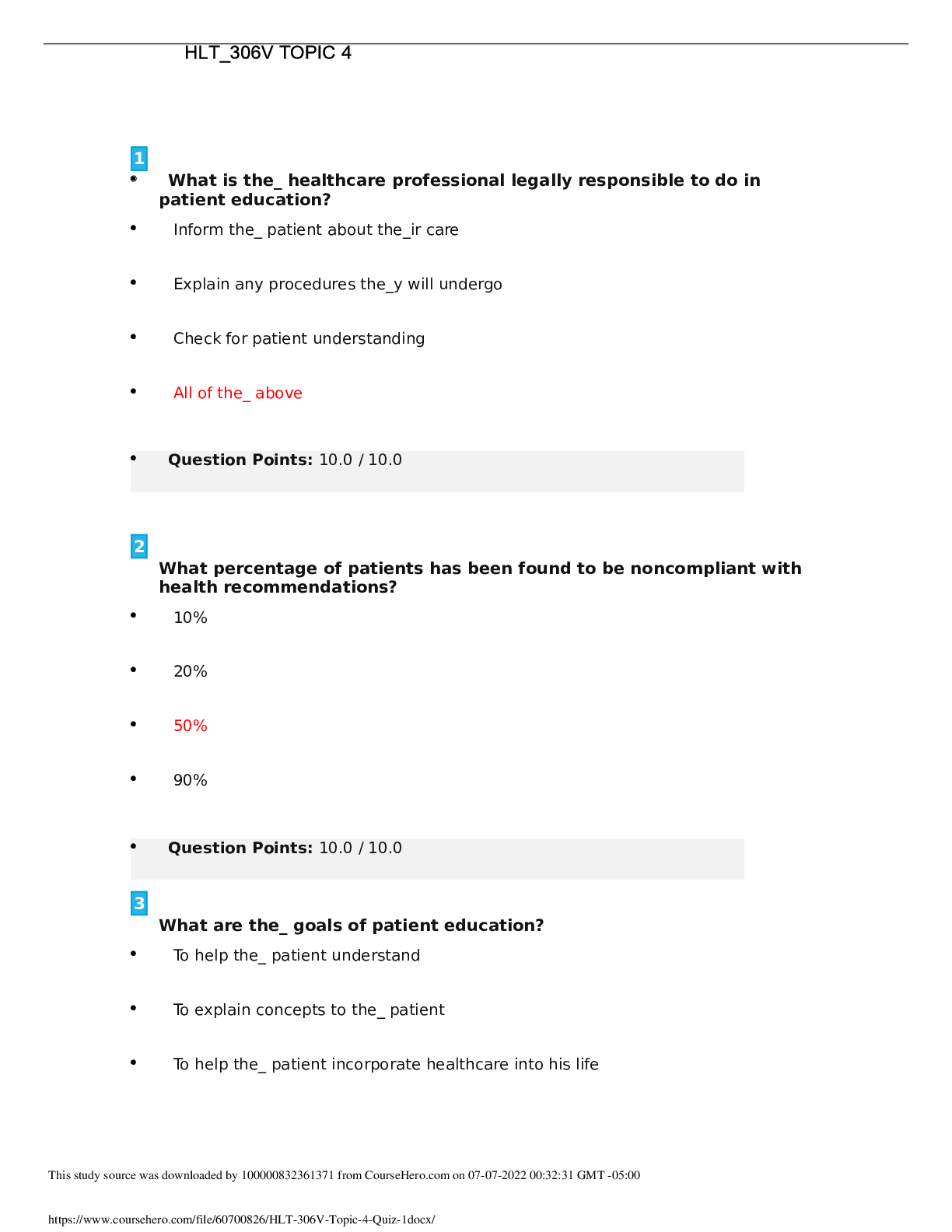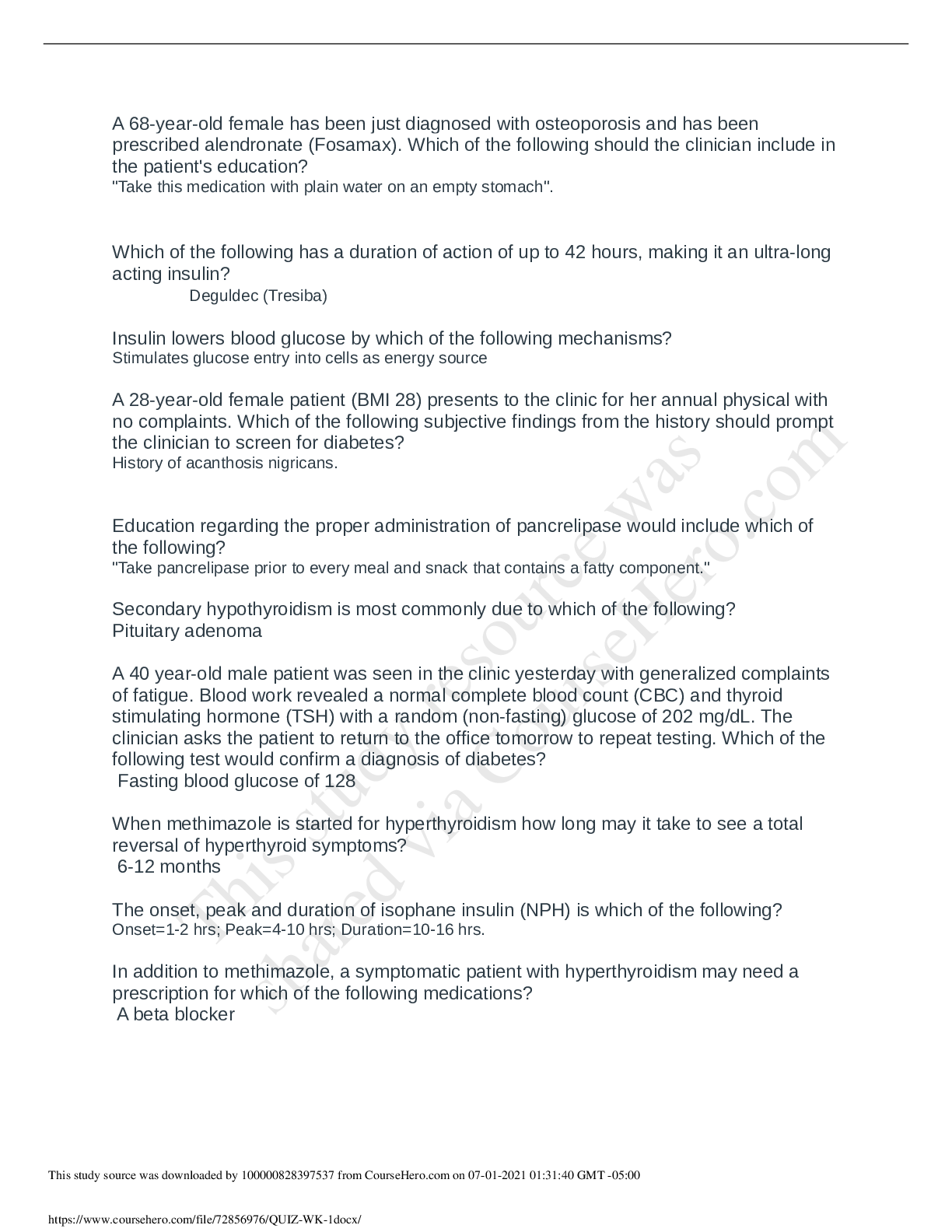BIO 123-20103 Osmoregulation and Excretion Quiz (100% CORRECT Solutions)
Document Content and Description Below
Osmoregulation and Excretion Quiz Top of Form Question 1 Correct Mark 1.00 out of 1.00 Flag question Question text Why does urine contain a higher concentration of wastes (be hypertonic... ) than the blood? Select one: a. Urine cannot since the process is passive diffusion b. Reabsorption of water and salt in the loop of the nephron and collecting ducts leaves behind more concentrated urine c. All stages in the kidney involve active transport d. Urine can be hypertonic for small molecules if it is hypotonic for an equal number of big molecules e. The whole nephron is impermeable to water Feedback The correct answer is: Reabsorption of water and salt in the loop of the nephron and collecting ducts leaves behind more concentrated urine Question 2 Correct Mark 1.00 out of 1.00 Flag question Question text Why is glucose found in the glomerular filtrate but not in the urine in healthy individuals? Select one: a. The kidneys store glucose as glycogen b. The kidney cells require glucose because energy is needed for active transport c. Glucose is reabsorbed back into the bloodstream d. Glucose is converted to amino acids in the kidneys e. Glucose molecules are too large to pass through the loop of the nephron Feedback The correct answer is: Glucose is reabsorbed back into the bloodstream Question 3 Correct Mark 1.00 out of 1.00 Flag question Question text What is the liquid that collects in the cavity of the glomerular (Bowman) capsule? Select one: a. Concentrated urine b. Blood plasma minus proteins c. Old bile ready for excretion d. Glycogen and water e. Albumin Feedback The correct answer is: Blood plasma minus proteins Question 4 Correct Mark 1.00 out of 1.00 Flag question Question text Which is the correct path by which urine leaves the body? Select one: a. Kidney, ureter, urinary bladder, urethra b. Kidney, urethra, urinary bladder, ureter c. Kidney, urinary bladder, ureter, urethra d. Kidney, urethra, ureter, urinary bladder e. Kidney, ureter, urethra, urinary bladder Feedback The correct answer is: Kidney, ureter, urinary bladder, urethra Question 5 Incorrect Mark 0.00 out of 1.00 Remove flag Question text What is the correct order of structures that will be blocked due to back filling of fluids caused by a blockage in the ureter? Select one: a. Ureter - renal pelvis - collecting duct - distal convoluted tubule - loop of Henle - proximal convoluted tubule - glomerular capsule b. Ureter - renal pelvis - collecting duct - proximal convoluted tubule - loop of Henle - distal convoluted tubule - glomerular capsule c. Ureter - collecting duct - distal convoluted tubule - renal pelvis - loop of Henle - proximal convoluted tubule - glomerular capsule d. Glomerular capsule - proximal convoluted tubule - loop of Henle - distal convoluted tubule - collecting duct - renal pelvis - ureter e. Renal pelvis - distal convoluted tubule - loop of Henle - collecting duct - proximal convoluted tubule - glomerular capsule – ureter Feedback The correct answer is: Ureter - renal pelvis - collecting duct - distal convoluted tubule - loop of Henle - proximal convoluted tubule - glomerular capsule Question 6 Incorrect Mark 0.00 out of 1.00 Flag question Question text What is the outer portion of the kidney? Select one: a. The renal medulla b. The renal nephron c. The renal pelvis d. The renal cortex e. The renal collecting duct Feedback The correct answer is: The renal cortex Question 7 Correct Mark 1.00 out of 1.00 Flag question Question text What does the loop of the nephron exhibit? Select one: a. Active release of sodium from the descending limb b. Active release of sodium from the ascending limb c. Passive release of sodium from the ascending limb d. Water release from the ascending limb e. Active transport of water Feedback The correct answer is: Active release of sodium from the ascending limb Question 8 Correct Mark 1.00 out of 1.00 Flag question Question text What is the correct order of blood vessels associated with the nephron? Select one: a. Renal artery, peritubular capillary, afferent arteriole, efferent arteriole, venule b. Efferent arteriole, glomerulus, venule, afferent arteriole, collecting duct c. Afferent arteriole, glomerulus, efferent arteriole, peritubular capillary, venule d. Afferent arteriole, glomerulus, peritubular capillary, efferent arteriole, venule e. Venule, efferent arteriole, peritubular capillary, glomerulus, afferent arteriole Feedback The correct answer is: Afferent arteriole, glomerulus, efferent arteriole, peritubular capillary, venule Question 9 Incorrect Mark 0.00 out of 1.00 Remove flag Question text Beginning with production and ending with elimination from the body, what is the correct flow of urine? Select one: a. Kidneys - urethra - ureter - urinary bladder b. Kidneys - ureter - urinary bladder - urethra c. Kidneys - urethra - urinary bladder - ureter d. Urethra - ureter - kidneys - urinary bladder e. Urethra - urinary bladder - ureters – kidneys Feedback The correct answer is: Kidneys - ureter - urinary bladder - urethra Question 10 Correct Mark 1.00 out of 1.00 Flag question Question text What is included in the excretory system of insects? Select one: a. Flame cells b. Kidneys c. Malpighian tubules d. Nephridia e. Nephrons Feedback The correct answer is: Malpighian tubules Question 11 Correct Mark 1.00 out of 1.00 Flag question Question text What is the correct path an excreted water molecule takes from the glomerulus to the collecting duct? Select one: a. Loop of the nephron, glomerular capsule, proximal convoluted tubule, distal convoluted tubule b. Glomerular capsule, proximal convoluted tubule, loop of the nephron, distal convoluted tubule c. Glomerular capsule, proximal convoluted tubule, loop of the nephron and distal convoluted tubule d. Proximal convoluted tubule, glomerular capsule, loop of the nephron, distal convoluted tubule e. Glomerular capsule, proximal convoluted tubule, distal convoluted tubule, loop of the nephron Feedback The correct answer is: Glomerular capsule, proximal convoluted tubule, loop of the nephron, distal convoluted tubule Question 12 Correct Mark 1.00 out of 1.00 Flag question Question text What does "e" represent in the figure of the nephron and its blood supply? Select one: a. The distal convoluted tubule b. Peritubular capillaries c. Efferent arteriole d. Afferent arteriole e. The proximal convoluted tubule Feedback The correct answer is: The distal convoluted tubule Question 13 Correct Mark 1.00 out of 1.00 Flag question Question text are removed from amino acids and nucleic acids and form ammonia, urea, and uric acid. Select one: a. Urea groups b. Amino groups c. Ammonia groups d. Protein groups e. Uric acid groups Feedback The correct answer is: Amino groups Question 14 Correct Mark 1.00 out of 1.00 Flag question Question text Which of the following animals produce uric acid? Select one: a. Birds b. Sharks c. Adult amphibians d. Bony fish e. Mammals Feedback The correct answer is: Birds Question 15 Incorrect Mark 0.00 out of 1.00 Flag question Question text Which of the following organisms have flame cells? Select one: a. Earthworms b. Fish c. Insects d. Sharks e. Planarians Feedback The correct answer is: Planarians Bottom of Form Finish review [Show More]
Last updated: 2 years ago
Preview 1 out of 10 pages
.png)
Buy this document to get the full access instantly
Instant Download Access after purchase
Buy NowInstant download
We Accept:

Reviews( 0 )
$11.00
Can't find what you want? Try our AI powered Search
Document information
Connected school, study & course
About the document
Uploaded On
Jan 17, 2022
Number of pages
10
Written in
Additional information
This document has been written for:
Uploaded
Jan 17, 2022
Downloads
0
Views
113
.png)

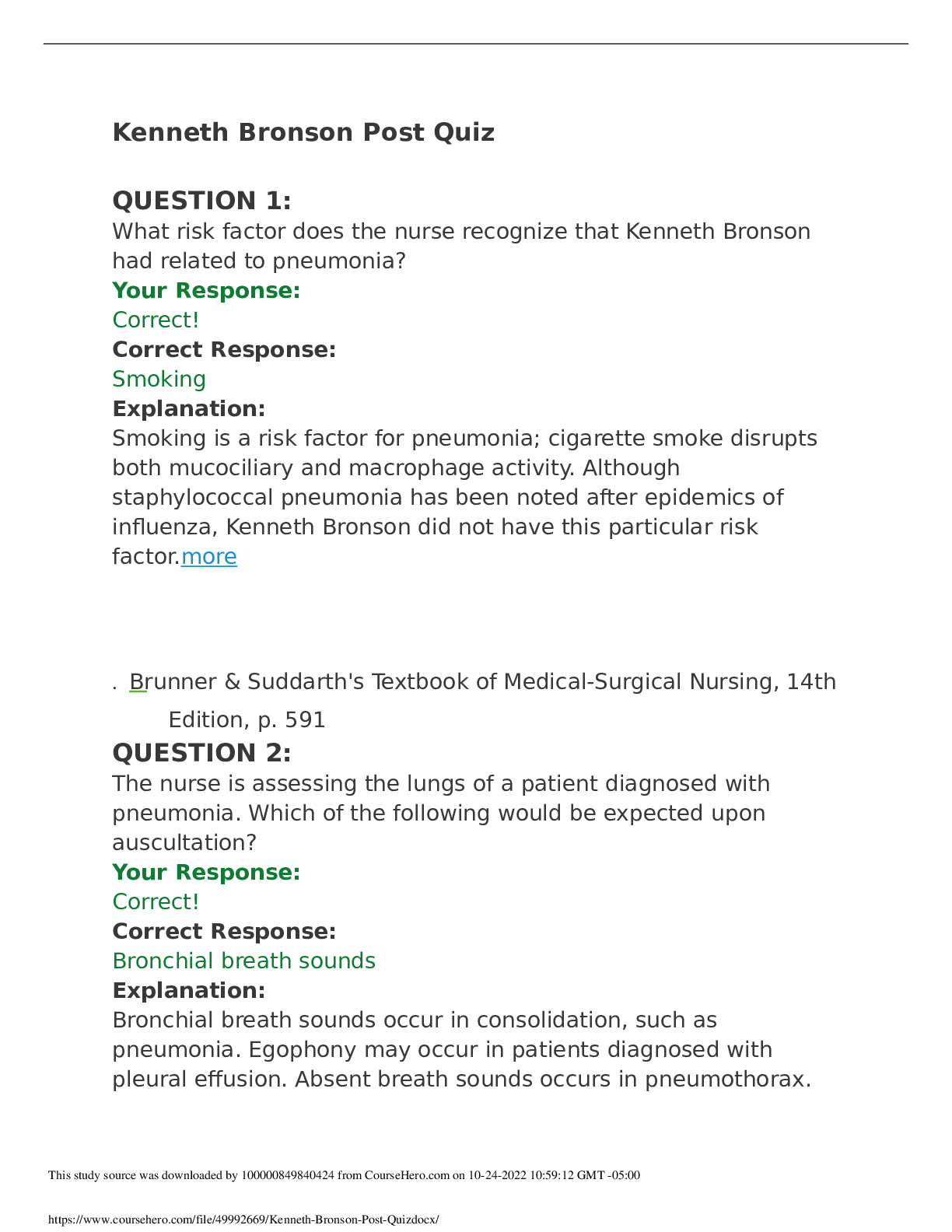



 Questions and Answers 100% VERIFIED.png)
 Questions and Answers 100% correct Solutions.png)



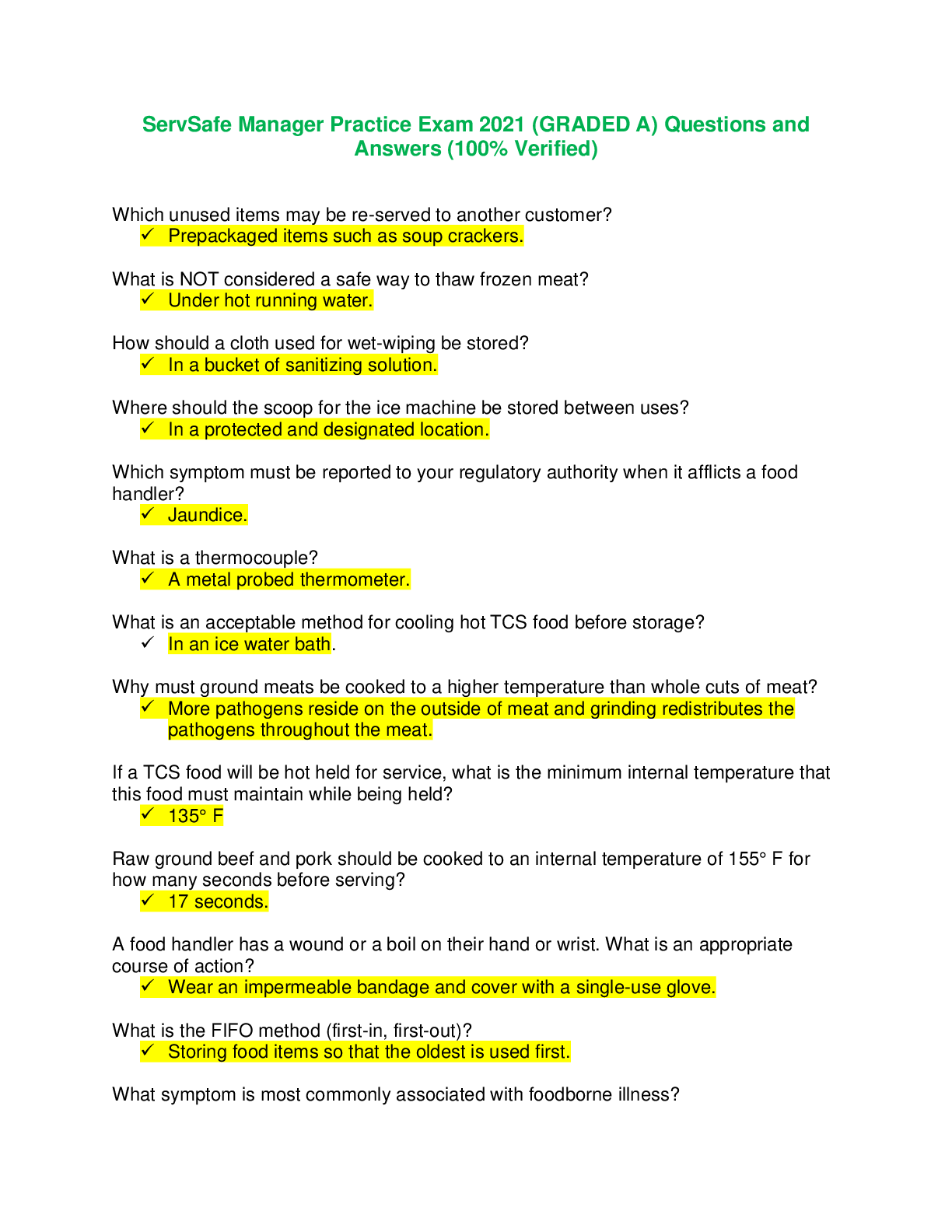



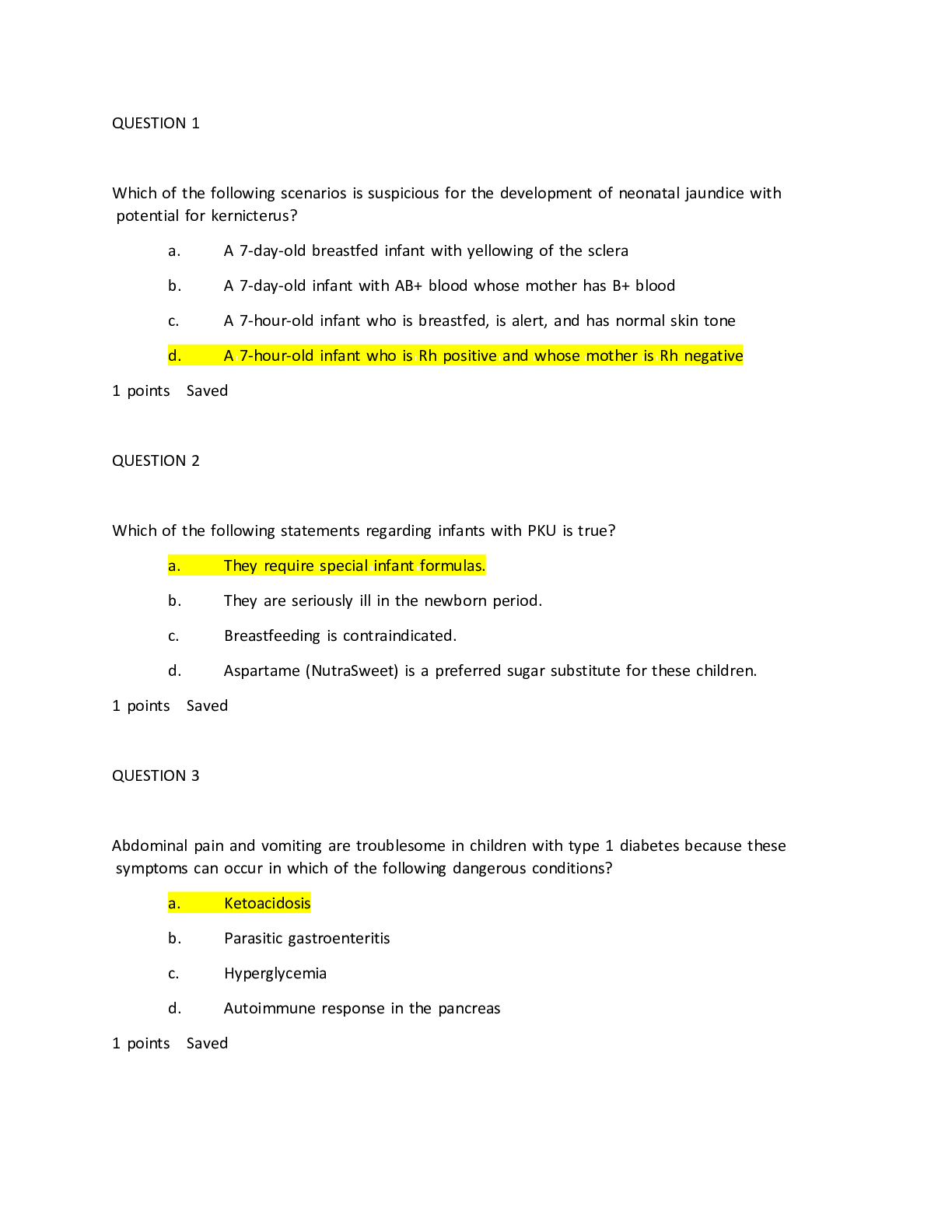



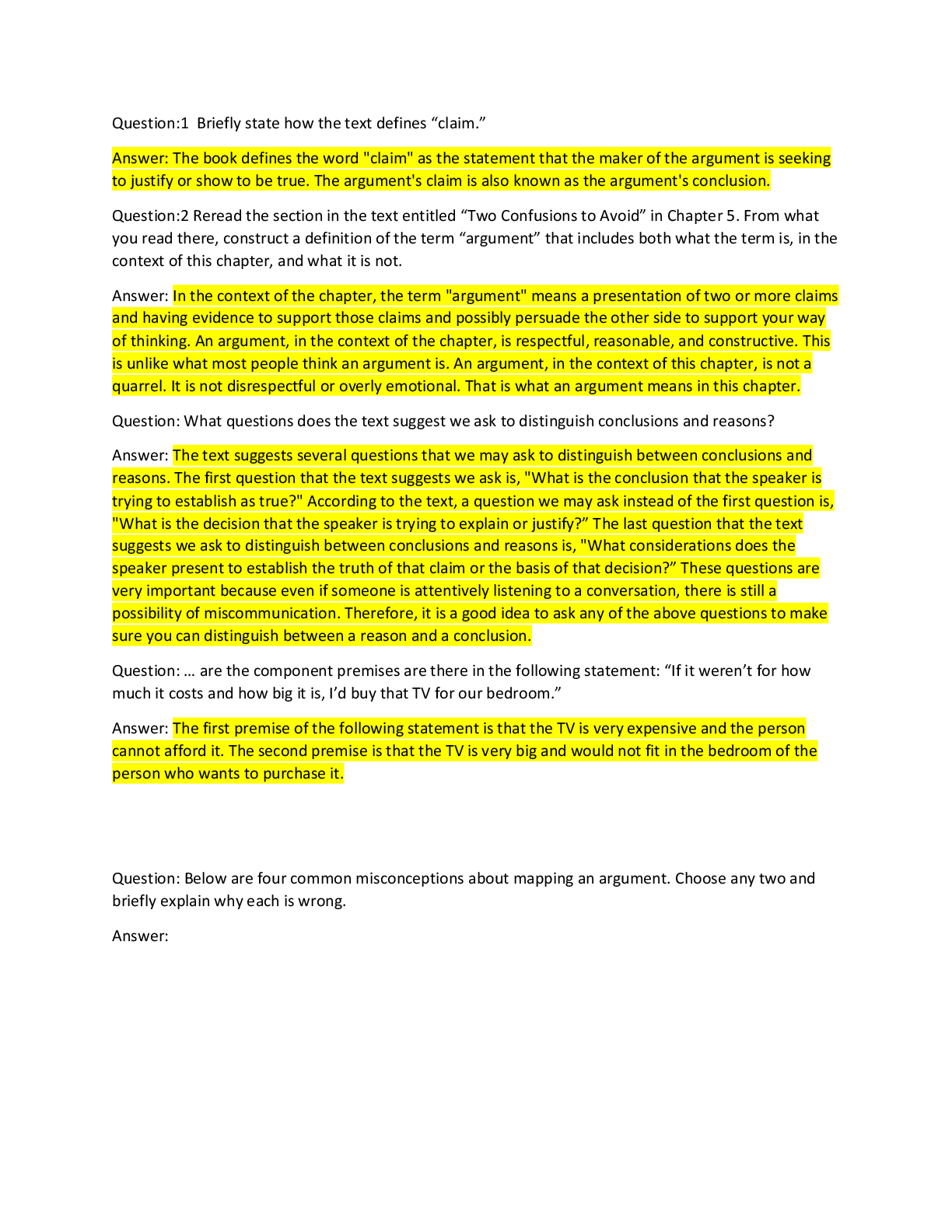
.png)
